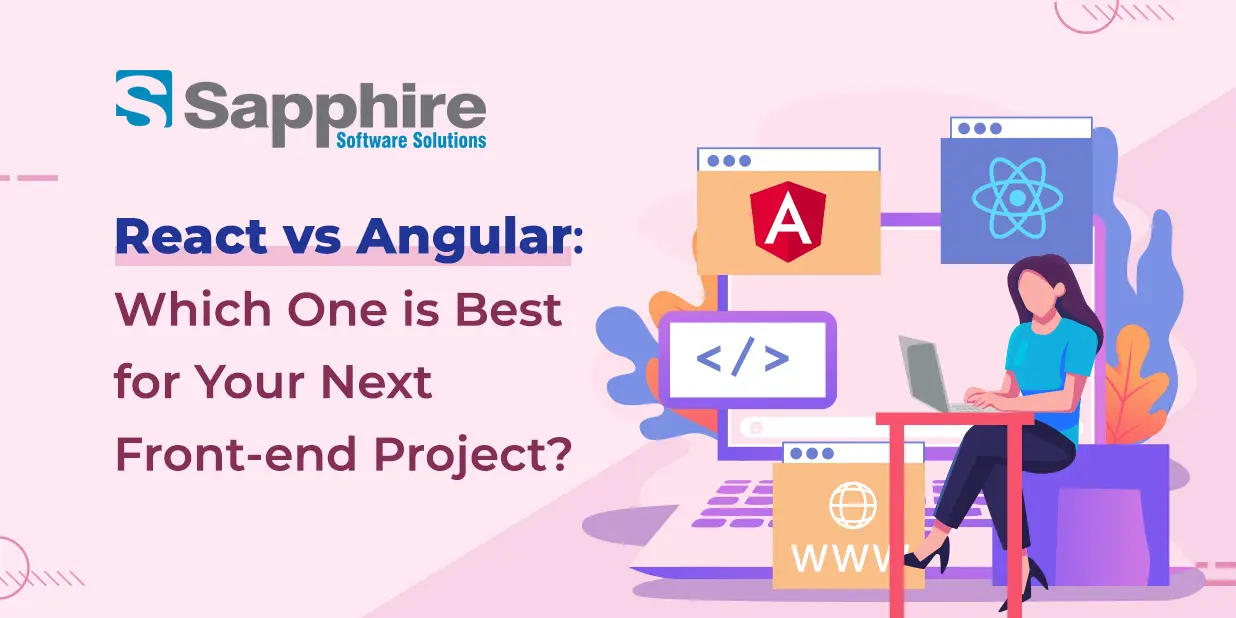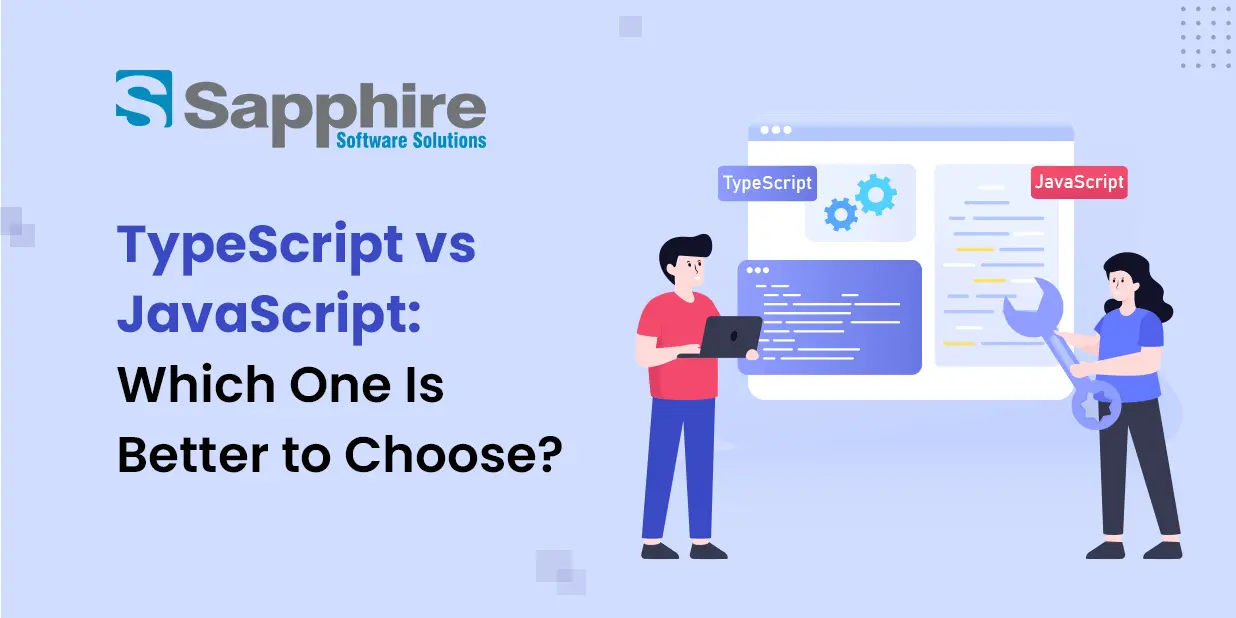However, architecture, performance, ecology, and learning curve differ significantly. We’ll examine the main Angular and React difference in this thorough blog to assist you in choosing the right tool for your next front-end project. It will help you choose the right Angular js development services to save time and money.
React:
Facebook’s React JavaScript framework is a popular option for web app user interfaces. With its component-based design and emphasis on simplicity and efficiency, React has transformed front-end development. This review covers React’s main features, advantages and ecosystem to help you choose the right React js development Company.
Introduction to React:
React was designed to ease complicated user interface development by splitting them down into reusable components. These components contain UI and logic, making code modular, manageable, and scalable. A React js development company uses React to ease complex user interfaces.
Key React Features:
- React‘s basic notion is its component-based design. UI components render certain parts of the interface and are independent and reusable. This modular approach reuses code and separates concerns.
- Virtual DOM: React optimizes rendering via a virtual DOM. When a component’s state changes, React updates a virtual version of the DOM and efficiently applies the changes to the real DOM. This boosts performance, particularly in frequently updated apps.
- JavaScript XML (JSX): This is a syntactic extension that enables HTML-like programming in JavaScript. Developers may declaratively specify UI components in JavaScript and XML-like syntax, improving code clarity and maintainability.
- Unidirectional Data Flow: React uses a single-directional data flow from parent to child components. This simplifies state management and clarifies data flow between application components.
Ecosystem and Community:
React has a thriving ecosystem and community. This ecosystem provides many libraries, tools, and resources to boost development productivity and solve common problems. Notable React libraries and utilities include:
- Redux: Utilized with React for centralized and predictable state management in JavaScript applications.
- React Router: A popular library for React apps, allowing developers to construct dynamic and navigable user interfaces using client-side routing.
- Material-UI: React components that follow Google’s Material Design standards, offering pre-designed UI elements for contemporary and attractive interfaces.
- Create React App: A toolchain for zero-configuration React projects, enabling developers to instantly start working on apps without worrying about build setup.
Learning Curve:
For JavaScript and HTML developers, React offers a short learning curve. React’s component-based structure makes application structure easier to comprehend and reason about. Advanced topics like Redux state management and asynchronous data fetching may take more time to grasp.
React’s simplicity, speed, and extensive ecosystem make it suitable for contemporary online apps. Component-based design, virtual DOM, JSX syntax, and unidirectional data flow make it popular among developers. The powerful and versatile React framework lets you create dynamic and interactive user interfaces whether you’re a seasoned developer or new to front-end development. You can also hire React developers to get dedicated development services and ensure security.
Angular:
Angular, created by Google, is a complete front-end framework for constructing dynamic and scalable online apps. Its opinionated design, robust features, and comprehensive tools make it popular for creating massive apps. This introduction covers Angular’s capabilities, ecology, and learning curve to help you choose the right Angular js development Company.
Angular Introduction:
Angular’s MVC architecture organizes front-end development. To simplify complicated application development, it promotes modularity, dependency injection, and two-way data binding. Angular uses TypeScript, a statically typed superset of JavaScript with type-checking and other sophisticated capabilities.
Major Angular Features:
- Angular has built-in solutions for typical tasks like data binding, form validation, and HTTP queries, unlike frameworks like React. Eliminating third-party libraries and integrations simplifies development with this thorough strategy.
- Angular’s two-way data binding seamlessly synchronizes the model and view. The display updates as model data changes, and vice versa. Bidirectional communication simplifies application state management and minimizes boilerplate code.
- The dependency injection mechanism in Angular allows components to specify dependencies and have them automatically injected, promoting modularity and code reuse. Since dependencies may be switched or mocked, this makes components simpler to test and manage.
- Angular’s CLI Tool automates typical development processes like scaffolding, code creation, testing, and deployment, streamlining the process. By simplifying project setup and maintenance, the Angular CLI lets developers concentrate on feature development.
Ecosystem, Community:
A prominent and active developer community supports Angular’s broad ecosystem. The ecosystem provides productivity tools, libraries, and resources for many use cases. Important Angular ecosystem components include:
- Angular Material: A UI component library according to Google’s Material Design principles. Modern and responsive user interfaces may be built using its pre-designed and customizable UI components.
- RxJS: A reactive JavaScript library that enhances Angular’s asynchronous paradigm. Event management, HTTP requests, and other asynchronous processes are simplified with its sophisticated data stream manipulation features.
- Angular Universal is a server-side rendering solution for Angular apps. Developers may server-side render Angular apps, enhancing speed, SEO, and user experience.
Learning Curve:
Due to its comprehensiveness and TypeScript usage, Angular has a higher learning curve than React. Angular’s modules, components, services, and dependency injection may need developer training. Effective Angular development requires knowledge of TypeScript’s advanced capabilities like static typing and decorators.
The opinionated and powerful Angular framework makes creating contemporary web apps accessible. The Angular CLI, two-way data binding, dependency injection, and other capabilities accelerate front-end development and encourage best practices. Although Angular has a higher learning curve than other frameworks, its robust ecosystem and community support make it a tempting alternative for creating enterprise-level apps. From simple prototypes to big apps, Angular has the tools to realize your ideas.
We hope now you have understood the difference between React js and Angular js.
React vs Angular: The right choice
- Assess project requirements, including complexity, scalability, and performance, to decide the optimal framework for your needs.
- Evaluate your team’s React and Angular development competence. Using a framework your team knows may speed up development and decrease learning.
- Ecosystem and Community Support: Evaluate library, tool, and community support for each framework. A healthy ecology boosts productivity and solves development issues.
- Consider your project’s long-term upkeep and sustainability. Select a framework with a reliable release cycle, active community, and long-term support.
There are several React js advantages over Angular and vice versa. However, choosing React or Angular entirely dampened on your budget, project requirements, app features and much more. Hence, users can choose a React js development company based on these criteria’s.
Conclusion:
You can consider this Angular vs React js guide to understand the differences between the two frameworks to make an intelligent selection that will help your project succeed. If you need help from a professional React or Angular js development company, contact us now ! You can also hire Angular developers or React experts from us at a fraction of cost who will work dedicatedly on your project.





































